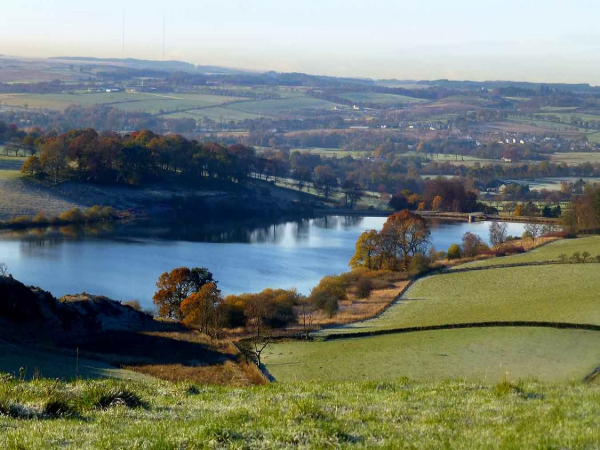Bathgate Linlithgow: History, Culture, and Political Significance of a Scottish Constituency
Exploring the Heritage, Community, and Modern Relevance of Bathgate and Linlithgow in Scotland

Bathgate and Linlithgow are two historic towns in West Lothian, Scotland, recently brought together under a single UK parliamentary constituency. Known for their rich cultural heritage, industrial past, and royal connections, these towns symbolize the blend of Scotland’s medieval legacy and modern progress. As of July 2024, Bathgate and Linlithgow have been represented in the UK Parliament by Kirsteen Sullivan of the Labour Party. This article provides a comprehensive exploration of the constituency, tracing its history, geography, culture, economy, and political importance.
The Birth of Bathgate and Linlithgow Constituency
Formation of the Constituency
The constituency of Bathgate and Linlithgow was officially created following the 2023 boundary review, which reorganized parliamentary seats across Scotland. It first came into effect for the UK General Election held on July 4, 2024. This new constituency brought together significant towns and villages, including Bathgate, Linlithgow, Whitburn, Blackburn, and Winchburgh. Its creation reflected demographic growth and a need for balanced representation in Westminster.
Political Representation
In the July 2024 election, Labour candidate Kirsteen Sullivan secured victory, marking a pivotal moment for the constituency. She won with a majority of 8,323 votes, defeating Martyn Day of the SNP. The result reflected broader national trends in Scotland, where Labour regained ground after years of SNP dominance.
Geographic and Historical Background
Bathgate: From Prehistory to Industry
Bathgate is located in the heart of West Lothian, around 20 miles from Edinburgh. Archaeological evidence suggests human habitation here dating back to 3500 BC. The town later rose to prominence during Scotland’s industrial age, with coal mining, ironworks, and the shale oil industry transforming it into a bustling hub. Today, Bathgate has reinvented itself as a modern residential and commercial town while preserving remnants of its industrial heritage.
Linlithgow: Royal Connections and Heritage
Linlithgow, just a few miles from Bathgate, is famous for its royal palace. Linlithgow Palace, built in the 15th century, was the birthplace of Mary, Queen of Scots, and remains one of Scotland’s most celebrated historical landmarks. Situated beside Linlithgow Loch, the town’s medieval layout, old kirks, and cobbled streets highlight its deep historical roots. Linlithgow has long been a symbol of Scotland’s regal heritage.
Cultural and Natural Heritage
Historical Landmarks
Linlithgow Palace: A partially ruined royal residence, it attracts thousands of visitors each year.
Bathgate Castle: Though little remains today, the motte-and-bailey structure dates back to the 12th century.
St Michael’s Parish Church: An iconic structure adjacent to Linlithgow Palace.
Natural Attractions
Beecraigs Country Park: Between Bathgate and Linlithgow, this park spans over 900 acres, offering woodlands, lochs, trails, and panoramic views.
Cairnpapple Hill: A prehistoric ceremonial site near Bathgate, with archaeological importance stretching back thousands of years.
The Economy of Bathgate and Linlithgow
Industrial Past
The area’s economy historically revolved around heavy industries such as coal mining, iron smelting, and shale oil extraction. Bathgate was once home to the world’s first commercial oil works, established by James Young in the 19th century.
Modern Developments
Today, both towns thrive as commuter bases for Edinburgh and Glasgow. Retail, healthcare, education, and light manufacturing are key employers. Business parks and improved transport links continue to support growth. Tourism, driven by heritage attractions, also contributes significantly.
Community and Demographics
Population Profile
Bathgate and Linlithgow together encompass a diverse population. While Bathgate is slightly larger and more modern in character, Linlithgow retains its medieval charm. Together, the towns reflect Scotland’s evolving identity, balancing tradition with modern life.
Religion and Identity
The constituency mirrors national trends toward secularism, with a significant proportion of residents identifying as non-religious. Christianity remains the largest faith, though minority religions also have a presence.
Transport and Connectivity
Rail and Road Links
Rail: Bathgate and Linlithgow are well connected by train, though direct services between the two are limited. Commuters often travel via Edinburgh.
Road: The M8 motorway and other arterial routes provide easy access to Edinburgh and Glasgow.
Public Transport: Frequent bus services link local communities, making mobility accessible.
Accessibility
Proximity to Scotland’s central belt ensures that Bathgate and Linlithgow remain well connected for work, study, and tourism.
Education and Institutions
Schools and Colleges
Both towns are home to a mix of primary and secondary schools. Linlithgow Academy is one of the best-known secondary schools in the area, often praised for academic achievement. Bathgate hosts modern educational facilities, ensuring accessible learning opportunities.
Libraries and Cultural Centers
Community libraries, arts venues, and cultural initiatives help preserve local heritage while fostering creativity among younger generations.
Political Importance
2024 General Election
The creation of the Bathgate and Linlithgow constituency was significant in Scottish politics. Labour’s victory signaled a major shift, especially given the SNP’s stronghold in the region for more than a decade. This seat is now viewed as strategically important for both Labour and the SNP in future elections.
Role in Westminster
As part of Scotland’s 57 constituencies represented in the House of Commons, Bathgate and Linlithgow contributes to shaping UK-wide policies. Issues such as healthcare, transport, and education remain central to the concerns of local voters.
Tourism and Travel
Attractions in Bathgate
Balbardie Park of Peace: A community park offering recreation.
Bathgate Golf Club: A notable local sporting venue.
Attractions in Linlithgow
Linlithgow Palace: The jewel of the town, with annual events and festivals.
Linlithgow Loch: Popular for walks and birdwatching.
Linlithgow Marches: A centuries-old festival celebrating community pride.
Lifestyle and Community Spirit
Events and Festivals
The towns celebrate their heritage through annual festivals, music events, and community fairs. The Linlithgow Marches and Bathgate Procession Day are highlights of the local calendar.
Sports and Recreation
Football, rugby, and golf are popular across both towns. Local clubs encourage youth participation and community involvement.
Future Prospects
Economic Growth
With continuing investment in housing and infrastructure, Bathgate and Linlithgow are poised for further growth. Their position within Scotland’s central belt makes them attractive to families and businesses alike.
Political Landscape
As one of the newly formed constituencies, Bathgate and Linlithgow will remain a political battleground. Both Labour and the SNP will aim to strengthen their influence here in upcoming elections.
Conclusion
Bathgate and Linlithgow represent more than just towns in Scotland—they embody centuries of history, industrial resilience, royal heritage, and modern community spirit. As a parliamentary constituency, they now stand together on the national stage, shaping policies and reflecting Scotland’s evolving identity. With a strong cultural backbone, vibrant communities, and growing economic importance, Bathgate and Linlithgow are set to play a vital role in Scotland’s present and future.



